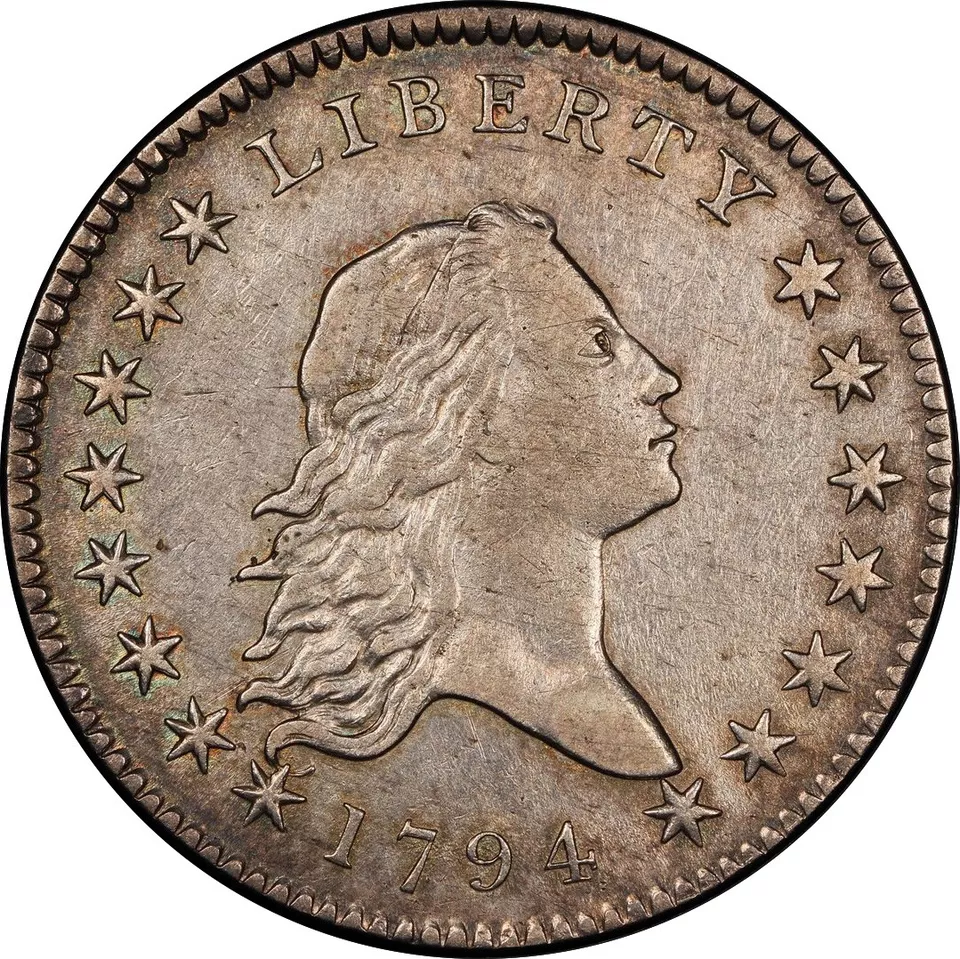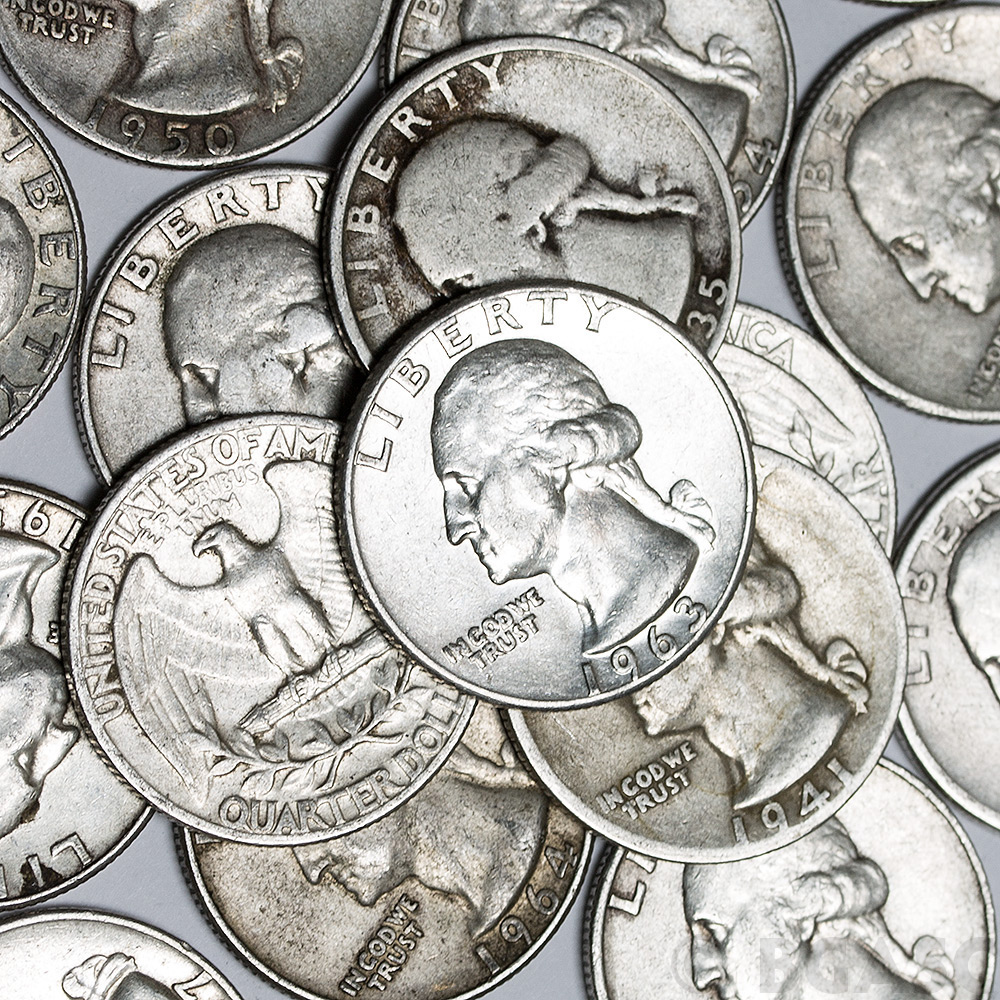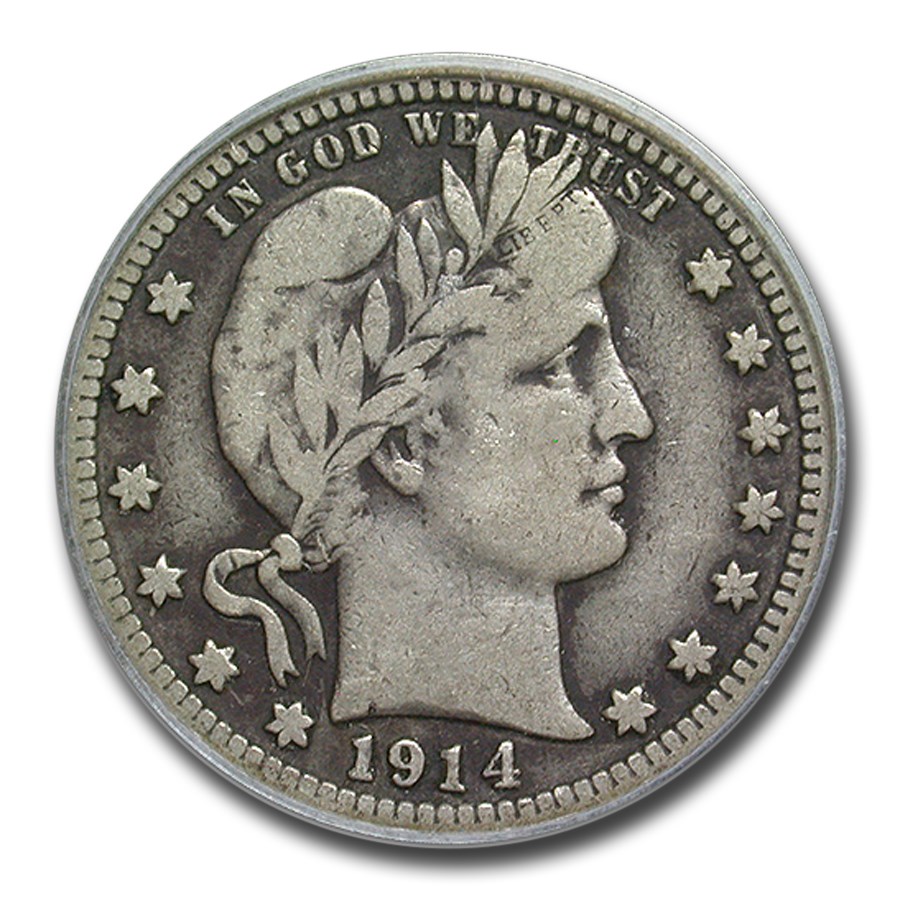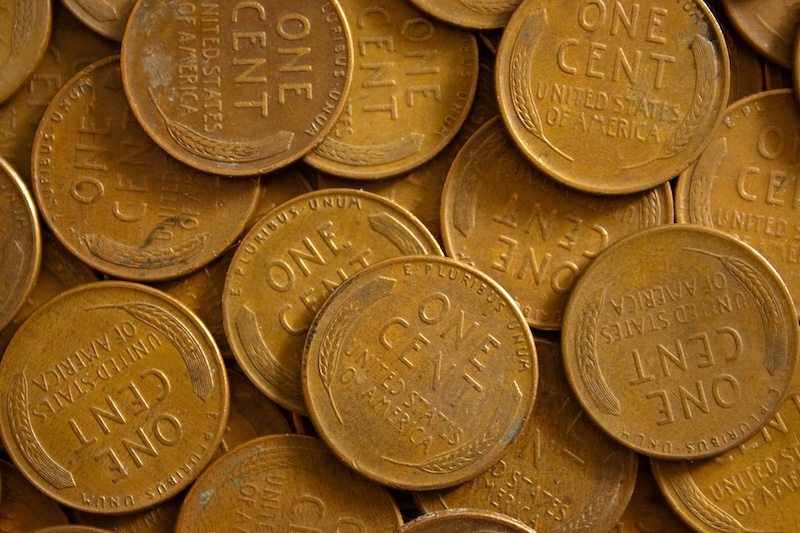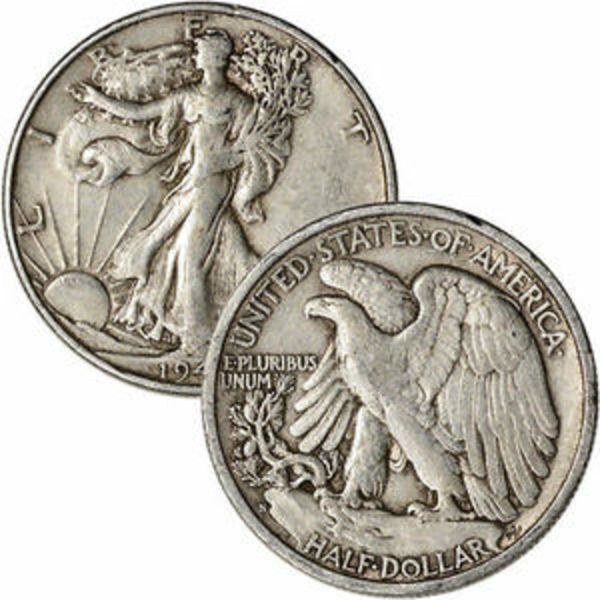Although they are used less often today, the half-dollar coin has been a cornerstone of American currency since its introduction in 1794. Over the centuries, it has undergone numerous changes. From the early Flowing Hair and Draped Bust designs to the more familiar Walking Liberty and Franklin halves.
While many investors buy silver coins for the intrinsic worth, some half dollar coins carry significant numismatic value that can enhance a tangible asset portfolio.
1794 Flowing Hair
The 1794 Flowing Hair half dollar holds a notable place in American numismatic history as the first half dollar coin issued by the U.S. Mint.
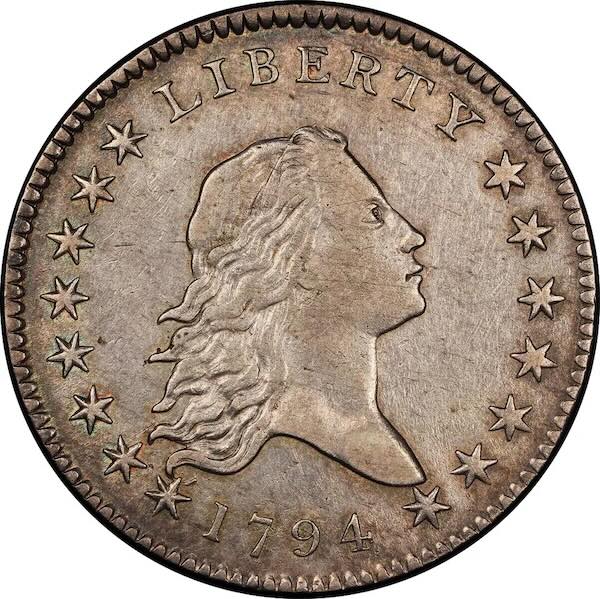
The age and scarcity make 1794 Half Dollar valuable among collectors.
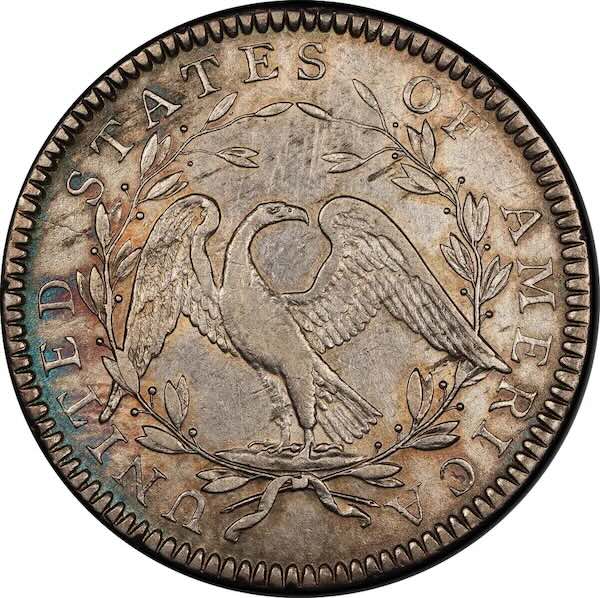
An example of how the condition can affect value is that a specimen in VF30 condition sold for $14,500 in a Heritage Auctions event. While a 1794 Half Dollar graded NGC AU55 sold for $69,000 at another auction.
Recently, the Mint issued a commemorative gold coin and a silver medal carrying this same design as a way to celebrate the 240th Anniversary of this coin’s first issue. The 1 oz Gold Coin using the same design is minted with 24-karat gold.
Draped Bust Series (1796–1807)
The Draped Bust Half Dollar was one of the earliest half-dollar designs. It features a portrait of Liberty with flowing hair draped in cloth on the obverse and an eagle on the reverse.
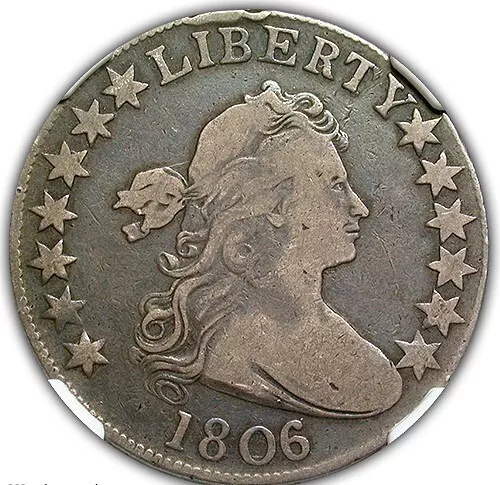
The Draped Bust series has two sub-types. The “Small Eagle Reverse” was produced from 1796 until 1797 and shows a small eagle within a wreath on the back.
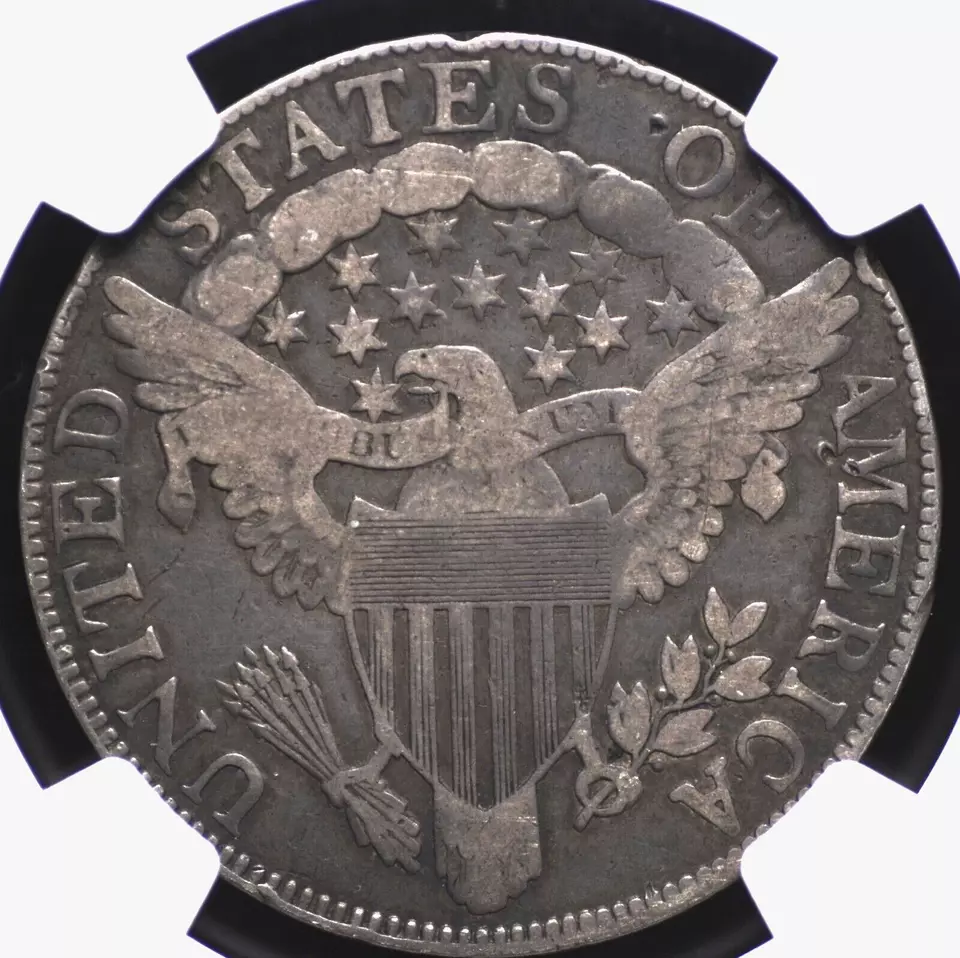
The “Heraldic Eagle Reverse” was minted from 1801 to 1807. It features a more prominent, heraldic-style eagle with a shield.
The Draped Bust with 15 stars is a rare variant. A PCGS VF25 1797 Draped Bust 50 Cent Piece fetched around $81,000 while another sold for $56,000.
Capped Bust (1807–1839)
Introduced in 1807, the Capped Bust half dollar depicts Liberty wearing a Phrygian cap on the obverse and an eagle with a shield on the reverse.
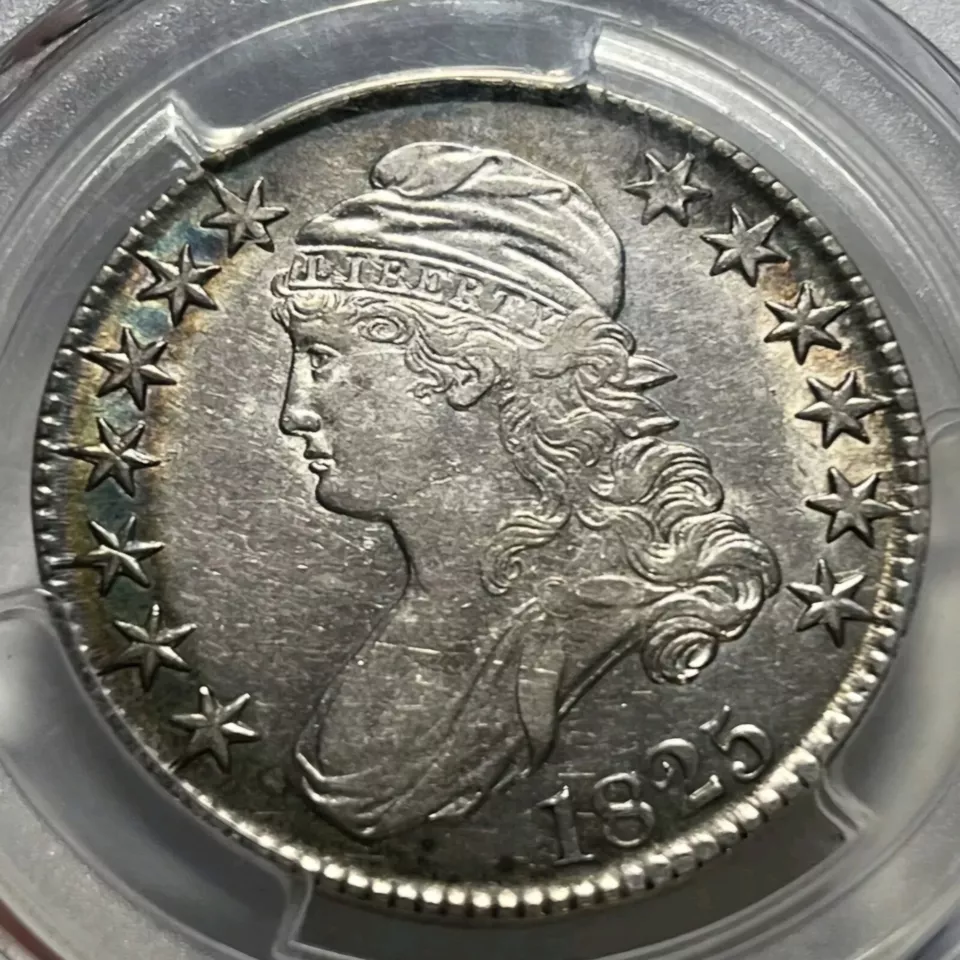
The Capped Bust Series also features two subtypes. The “Lettered Edge” type was issued from 1807 until 1836. Its face value is inscribed around the edge with the phrase “FIFTY CENTS OR HALF A DOLLAR.”
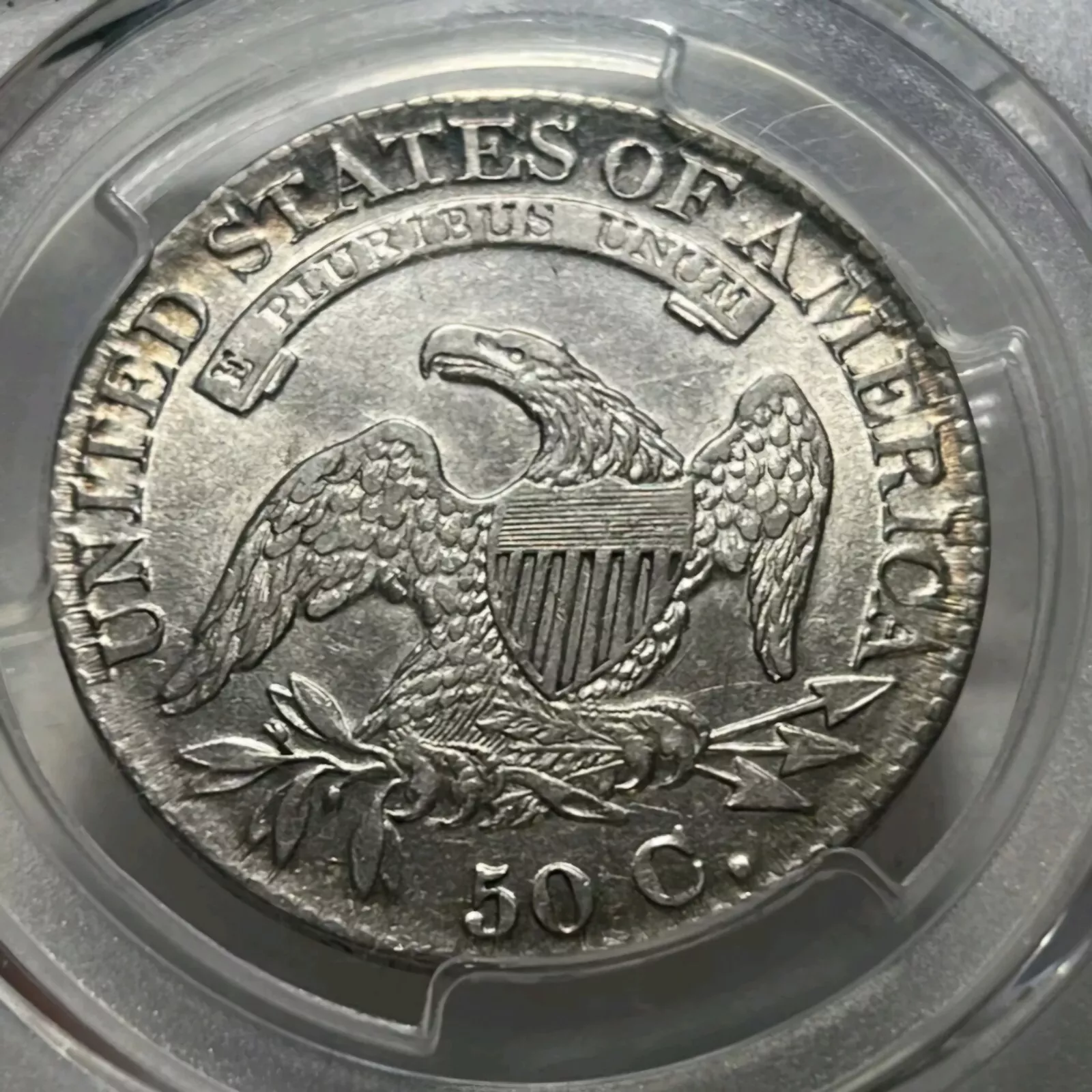
The “Reeded Edge” type was introduced in 1836 and issued until 1839. This variety introduced the modern reeded edge and slight design modifications.
The 1838-O is significant as the first half-dollar coins minted in New Orleans. With fewer than 20 known examples, one sold for $493,500 at a Stack’s Bowers auction in 2008 and another worth $632,500 at a Heritage Auctions event in 2015.
Seated Liberty (1839–1891)
The “Seated Liberty” features Liberty seated on a rock, holding a shield and a liberty pole with a cap. The reverse shows an eagle clutching arrows and an olive branch.
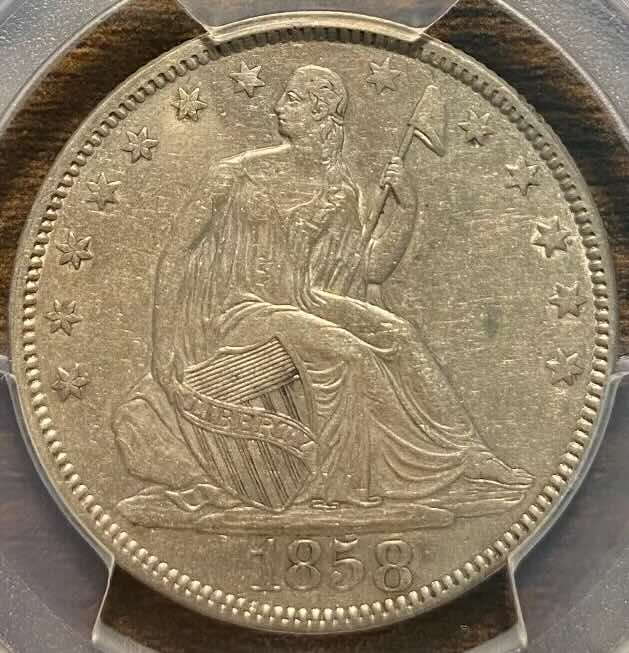
There are three distinct varieties in the Seated Liberty Series. The “No Motto” type was minted without the “IN GOD WE TRUST” motto until 1865.
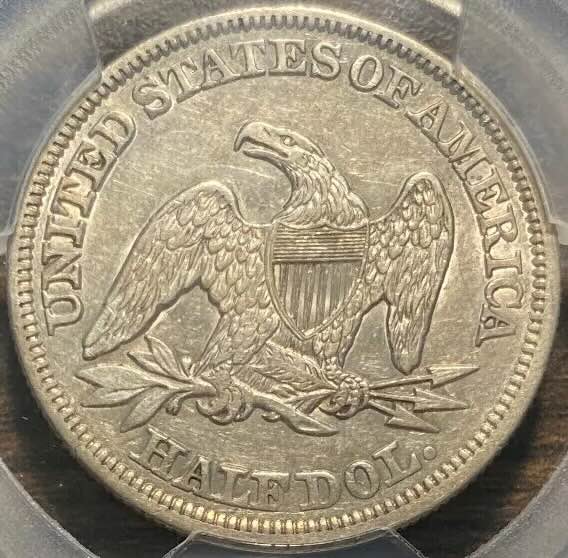
Arrows were added to the date from 1853 to 1855 and again from 1873 to 1874 to indicate a change in the weight and composition. After the Civil War, the motto “IN GOD WE TRUST” was added on a ribbon above the eagle. The “With Motto” type was minted from 1866 to 1891.
Barber Half Dollar (1892–1915)
Designed by Charles E. Barber, the Barber Half Dollar coins feature a classical depiction of Liberty wearing a Phrygian cap and laurel wreath on the obverse and an eagle clutching arrows and an olive branch on the reverse.
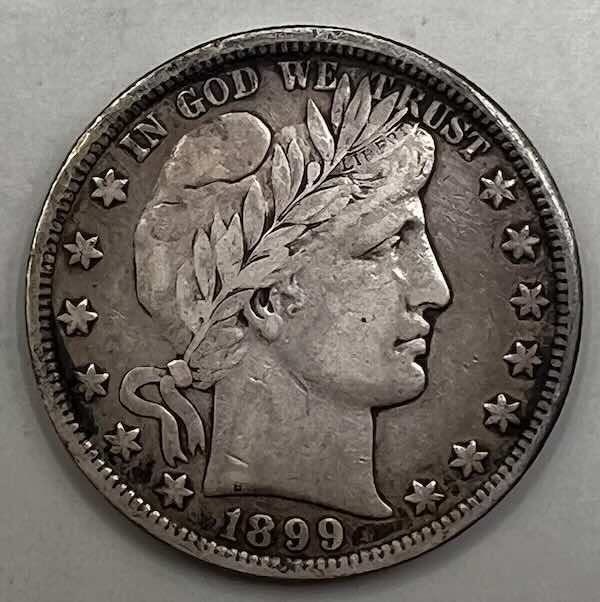
The heraldic eagle is similar to the Great Seal of the United States.
Key Date Barber Half Dollar Coin Values
Date | Notes | Value Range in Circulated Grades |
|---|---|---|
| 1892-S | The first year of the Barber half dollar series from the San Francisco Mint. | $125 – $32,000 |
| 1893-S | Another lower mintage. | $100 – $2,500 |
| 1896-O | Low mintage from New Orleans Mint. | $50 – $115,200 |
| 1896-S | Low mintage from San Francisco Mint. | $300 – $1,500 |
| 1897-O | Most examples from New Orleans are heavily circulated and can be difficult to find in higher grades. | $120 – $700 |
| 1901-S | Scarce in all grades, with uncirculated coins commanding significant premiums. | $150 – $800 |
| 1904-S | Another low-mintage coin that is rare in higher grades. | $120 – $700 |
| 1913 | One of the lowest mintages in the series, making it valuable across all conditions. | $100 – $500 |
Walking Liberty (1916–1947)
Minted from 1916 until 1947, the Walking Liberty is considered one of the most beautiful U.S. coin designs. Designed by Adolph Weinman, the obverse depicts Lady Liberty striding toward the sunrise, draped in the American flag, holding laurel and oak branches symbolizing civil and military glory. The reverse features a majestic eagle perched on a mountain pine sapling.
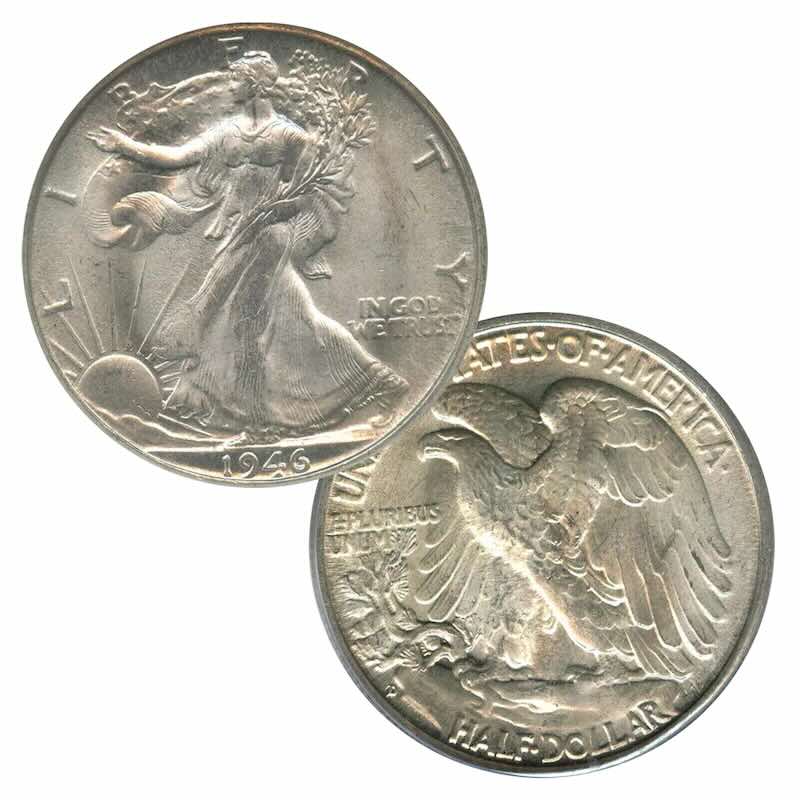
The 1921-S Walking Liberty stands out as a key date due to its low mintage of just 548,000 coins. During recent auction events, a PCGS MS64 graded coin sold for $9,000. Another, graded NGC AU58, realized $7,200 in a recent sale.
Key Date Walking Liberty Half Dollar Coin Values
| Date | Notes | Value Range |
|---|---|---|
| 1916-S | As an early issue, the 1916-S has a lower mintage compared to its Philadelphia counterpart | $2,000 to $3,000 |
| 1917-D and 1917-S Obverse Mintmark | In 1917, the mintmark was moved from the obverse to the reverse. Coins with the mintmark on the obverse are scarcer. | $500 to $150,000 |
| 1919-D and 1919-S | These coins have low mintages and saw heavy circulation. | $80 to $4,000 |
| 1921, 1921-D, 1921-S | The 1921 issues are key dates in the series with very low mintages. The 1921-D is particularly scarce. | $80 to $6,000 |
| 1938-D | Although later in the series, the 1938-D has a low mintage and is considered a semi-key date. | $120 to $2,000 |
The 1938-D had a mintage of only 491,600, making it the lowest mintage among the late-date half-dollar coins in the series. In auction sales, a PCGS MS66-graded coin sold for $1,560. Another example, with XF details, realized only $121. Another example of how condition can make a significant impact on a coin’s value.
Franklin Half Dollar Coins (1948–1963)
John R. Sinnock designed this coin featuring Founding Father Benjamin Franklin on the obverse and the Liberty Bell on the reverse.
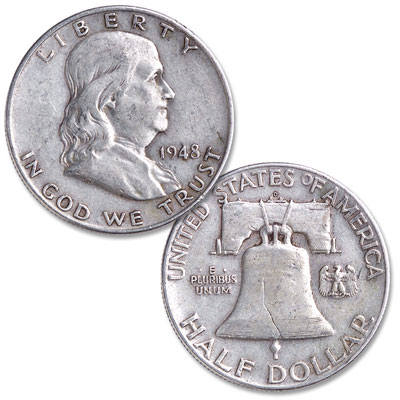
The small eagle to the right of the Liberty Bell is to fulfill the legal requirement.
Key Date Franklin Half Dollar Coin Values
| Year/Variety | Notes | Value Range |
|---|---|---|
| Full Bell Lines (FBL) | Franklins are worth more than melt value when they exhibit Full Bell Lines on the Liberty Bell’s image. | $20 to $30 and up |
| 1949-S | Known for weaker strikes, making FBL coins scarce | $20 to $200 |
| 1950-D | Notorious for weak strikes | $15 to $200 |
| 1955 “Bugs Bunny” Variety | A die clash error gives Franklin the appearance of buck teeth, resembling Bugs Bunny. | $50 to $180 |
| Proof Cameo Coins (1961 and 1962) | Proof coins with strong cameo contrasts are scarce. Cameo proofs from these years are more valuable than standard proofs. | $50 to $300 |
Early proof Franklin half dollar coins with deep cameo contrasts are scarce. In recent auctions, a PR68 1950 Deep Cameo coin sold for $13,800. While another, graded PR65DCAM Deep Cameo, realized $8,400.
Kennedy (1964–Present)
Quickly introduced after President John F. Kennedy’s assassination in 1963. The obverse, designed by Gilroy Roberts, features a portrait of Kennedy. The reverse displays the Presidential Seal, which Frank Gasparro created.
Key Date Kennedy Half Dollar Values
| Key Date | Notes | Value Range |
|---|---|---|
| 1964 Accented Hair Proof | Only initial proof strikes feature extra hair detail above President Kennedy’s ear. | PR66: $85 PR68: $46,800 |
| 1964-D Doubled Die Obverse (DDO) | Error coin with noticeable doubling on the obverse inscriptions around in “WE TRUST” and the date. | $120 to $150 |
| 1970-D | Generally worth melt value unless in exceptional condition. | Auction Record: $12,500 |
| 1970-S Proof | Low mintage proof. | PR65: $15 Higher grades:up to $50 |
| 1974-D Doubled Die Obverse (DDO) | Features doubling on the obverse inscriptions around “IN GOD WE TRUST” and “LIBERTY.” | $15 to $50 |
| 1987-P and 1987-D | Low mintage from Philadelphia and Denver was available only in mint sets. | $5 to $50 |
| 1998-S Matte Finish | Part of the special Robert F. Kennedy commemorative set. | $150 to $350 |
| 2014-W 50th Anniversary Gold Proof | A special issue struck in 3/4 oz of .9999 fine gold to commemorate the 50th anniversary of the Kennedy half dollar. | $2,200 to $3,000 |
The “Accented Hair” variety of the 1964 Kennedy half dollar was part of the initial proof strikes. Jacqueline Kennedy requested the mint to soften the hair details, which led to a design change after minting some coins. A PR67 Deep Cameo example sold for $325 at auction, while a PR68 Deep Cameo coin realized $6,000 at a Stack’s Bowers event.
Conclusion
Investing in numismatic silver half dollars offers the dual benefit of owning tangible assets with intrinsic silver value and the potential for appreciation. While most circulated coins like the 1964 Kennedy, Franklin, and Walking Liberty half dollars are popular for their silver content, those with rare dates, mint errors, and high-grade specimens are worth significantly more. As always, thorough research and consultation with reputable dealers are essential when venturing into numismatic investments.
